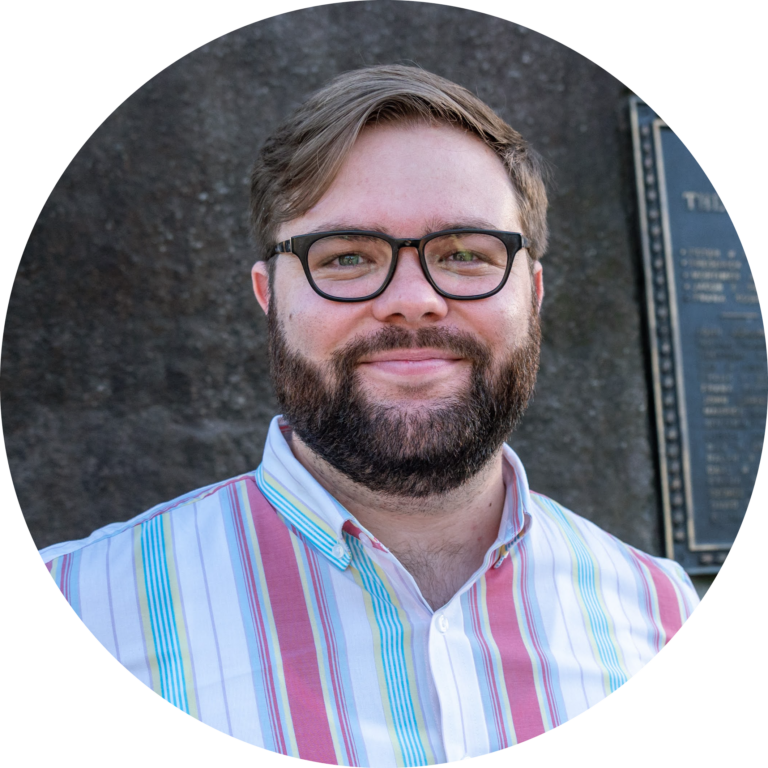I live through an odd phenomenon every year: Pride month and the General Synod of the Reformed Church in America (RCA) happening simultaneously.
As someone who belongs to the queer community and the RCA, it’s odd to plan for joy-filled Pride events while also planning to be annoyed by an obscure ecclesiastical body “debating” over the somehow perennial topics of sexuality and gender.
Cheeks sore from smiling and laughing are also cheeks sore from jaw clenching and teeth grinding.
This phenomenon of dissonance was a particular “heartstopper” this year.
Texts, tweets, and team Slack channels all discussed the state of affairs in the RCA: fear, frustration, fickleness. There was an added sense of wide-eyed disbelief as our sibling denomination, the Christian Reformed Church in North America (CRCNA), brazenly did in one Synod what the RCA has been trying to avoid through painful indecision over the past decade: cynical clarity and contractual compliance.
Both RCA inaction and CRCNA blunt action are ugly in their own way. Where was beauty in all of this? Well, beauty was absent.
At the same time, there were other texts and tweets and FaceTime calls swirling around in the queer community, also concerning sexuality and gender. Instead of discussing overtures and reports, we discussed heart-skipping romance and tearful smiles. We were gushing over Netflix’s new hit show Heartstopper.

“[L]ike a hug in TV form,” writes Guardian columnist Rebecca Nicholson, Heartstopper “is unutterably sweet and wholesome…it leaves the sensation of being on the receiving end of a solid hug.”
It’s hard to describe the sheer gift this show is to so many in the queer community; it’s a glimpse of an existence where queerness is centered and celebrated, not targeted or tokenized. It is a colorful vision of the beautiful in its many queer forms.
Quite the stark opposite from the synodical proceedings unfolding. The dissonance between ecclesiastical ugliness and the beautiful depicted in Heartstopper was chasmic.
Interestingly, Heartstopper’s iridescent beauty inadvertently saddened many of my friends. A sense of melancholy set in after watching the show due to pining for such an adolescence. In their childhood, this form of beauty was absent.
Beauty and what happens in its absence made me think of one of my favorite quotes from the 20th-century Catholic theologian Hans Urs von Balthasar in his The Glory Of The Lord: A Theological Aesthetics. Vol. 1, Seeing the Form:
We no longer dare to believe in beauty and we make of it a mere appearance in order the more easily to dispose of it. Our situation today shows that beauty demands for itself at least as much courage and decision as do truth and goodness, and she will not allow herself to be separated and banned from her two sisters without taking them along with herself in an act of mysterious vengeance.
When left out, beauty enacts a mysterious vengeance.
Synods can debate definitions of words for clarity or opine about unity, make truth claims or argue over ethical paradigms; yet, when wide acceptance for what is evidently beautiful is rejected, the whole thing begins to reek. Beauty is swift with her vengeance.
The sweet aroma that may have been there mysteriously mutates into the residual odors of phobias and the pungent scent of masquerading beauty; the stench settles into the carpets and seeps into the walls. Like a hazardous home, it is hard to imagine declaring these denominations habitable, at least for queer people and those who advocate for such evidentiary beauty.
However, the good news is that, though beauty can be vengeful when betrayed with a kiss on the cheek, beauty can be sought and found starting with the most human of faculties: desire.
Do you desire to exemplify the beautiful? I know a few folks who do.
Though the beautiful was absent or denied in my queer and Reformed friends’ childhoods, I now see them hugged by and living out the beautiful in the places where beauty took truth and goodness: becoming chaplains, getting ordained in sanctuary classes, transferring to different denominations, leaving the institutional church altogether, becoming social workers or counselors or advocates. They gloriously exemplify queer beauty’s form in all its kaleidoscopic splendor.
Friends, beauty does have a mysterious vengeance, but beauty also longs to be found. Desire the beautiful to find her, and you’ll most likely find truth and goodness by beauty’s side.

